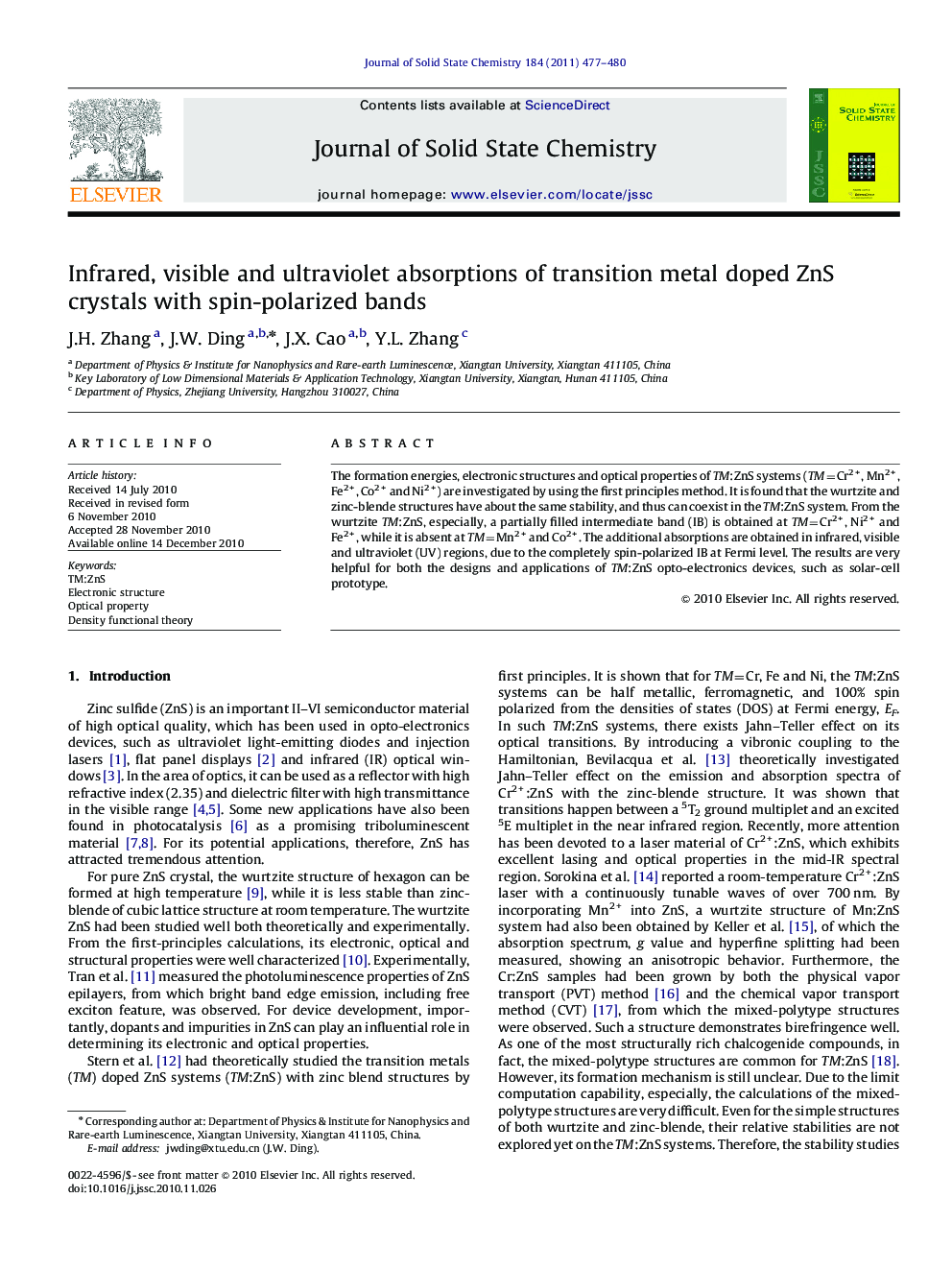| Article ID | Journal | Published Year | Pages | File Type |
|---|---|---|---|---|
| 1333053 | Journal of Solid State Chemistry | 2011 | 4 Pages |
The formation energies, electronic structures and optical properties of TM:ZnS systems (TM=Cr2+, Mn2+, Fe2+, Co2+ and Ni2+) are investigated by using the first principles method. It is found that the wurtzite and zinc-blende structures have about the same stability, and thus can coexist in the TM:ZnS system. From the wurtzite TM:ZnS, especially, a partially filled intermediate band (IB) is obtained at TM=Cr2+, Ni2+ and Fe2+, while it is absent at TM=Mn2+ and Co2+. The additional absorptions are obtained in infrared, visible and ultraviolet (UV) regions, due to the completely spin-polarized IB at Fermi level. The results are very helpful for both the designs and applications of TM:ZnS opto-electronics devices, such as solar-cell prototype.
Graphical abstractAbsorption coefficients of w-TMxZn1−xS crystals (TM=Cr2+, Mn2+, Fe2+, Co2+ and Ni2+) at x=0.028. The results may be helpful for the design and applications of TM:ZnS devices, especially for the new high efficiency solar-cell prototype, UV detector and UV LEDs.Figure optionsDownload full-size imageDownload as PowerPoint slideResearch highlights► It is found that the wurtzite and zinc-blende structures can coexist in TM:ZnS. ► An intermediate band is obtained in TM:ZnS at TM=Cr2+, Ni2+ and Fe2+. ► The absorption coefficients are obtained in infrared, visible and ultraviolet regions.
